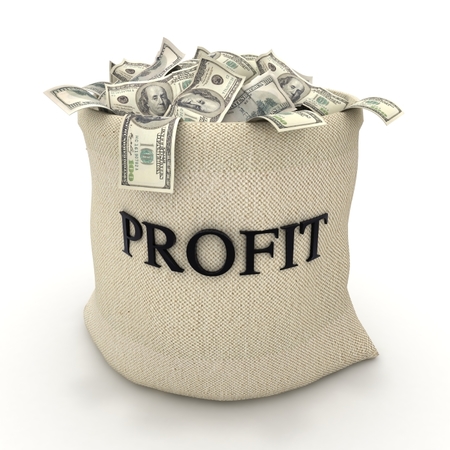Cash is King?

Very often the difference between Profit and Cash Flow can make or break a business.
To define in simple terms, profit is what is left of revenue once expenses are paid. Many believe this is what should be in the bank... if only! More usually the profit may be used to invest in new equipment, pay loans and help expand the business. And let's not forget the “T” word, yes you also have to pay taxes out of profits. And then after all that, the owners, with any luck, will get their slither or hopefully a chunk of the pie.
Cash flow on the other hand relates more to when a business needs money. For example, when they must pay for supplies, wages and salaries, utility bills and rent (just to name a few). Often all these bills will have to be paid before revenue is even generated, especially in the infancy stage of the business.
So by determining when cash will come into and out of the business you can ensure to a large degree, that you will not be vulnerable to a cash crisis which could affect the success of your business.
A profitable business can have very poor cash flow. If say you don't collect debtors within an acceptable time frame or you are over committed to the banks. Conversely some business can have great cash flow but have poor profit, this was seen in the IT boom in the 90's, many sold stocks in their companies which were floated on an “idea”. Their bank account was healthy but no profit. In time they either need to start making profit or their cash will be swallowed up by losses.
Ultimately profit should drive cash flow. Monitoring key indicators will help you maximise profit, like ensuring margins and costings are correct, meeting sales budgets, triming down the fat on the expense side. Once you have the profit you need to convert it to cash. Ways to increase cash flow include, collecting from debtors, decreasing stock holdings, pay suppliers slower and know when you might need to borrow money or inject capital to avoid cash flow problems.
Let's say you wanted to set up a transport business. You have to invest in trucks and vehicles, lease and set up an office and depot, pay wages and utilities etc all before your first dollar comes through the door. To achieve this you will either use personal funds, investor funds or bank loans.
Once you have earned revenue, you may not collect it until a date in the future, so you will need to make sure you have the cash to pay expenses until the revenue converts to cash.
So let's recap, profit is how much money you have left of your revenue after expense are paid. Cash flow is when you actually get and pay the cash.
Watching key performance indicators like EBIT(earnings before interest and tax), gross margins, cash balance, debt ratio and number of days in collection cycle, will ensure you have your finger on the pulse. From that you forecast profit and cash flow to understand where and when you need CASH to help you plan and avert a crisis.